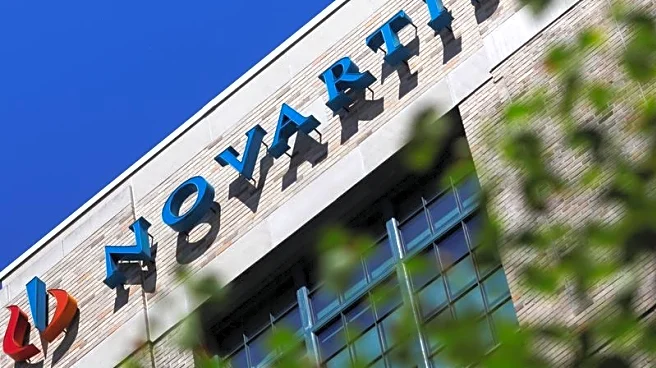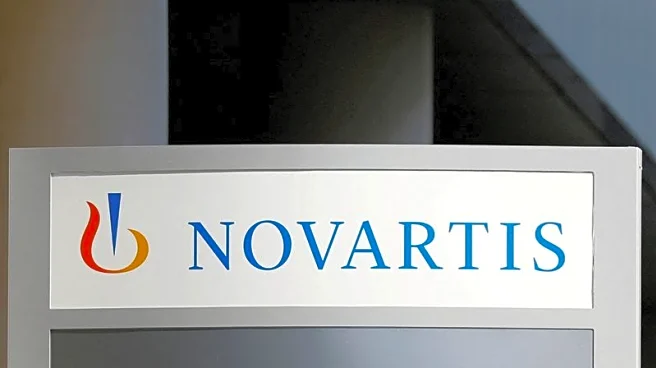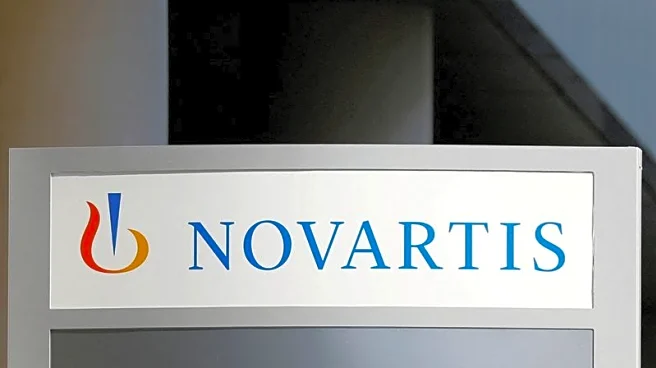What's Happening?
Novartis has reported a 7% increase in overall revenues for the third quarter, reaching $13.9 billion, despite a 1% decline in sales of its heart failure drug Entresto due to generic competition. The decline in Entresto, which remains Novartis' largest
product with nearly $1.9 billion in sales, is being countered by the company's strategic focus on new drug approvals and acquisitions. Notably, the FDA recently approved Rhapsido (remibrutinib) for chronic spontaneous urticaria, and Novartis has seen strong growth in other products such as Kisqali for breast cancer, Pluvicto for prostate cancer, and Kesimpta for multiple sclerosis. CEO Vas Narasimhan emphasized the company's robust pipeline and ongoing investments, including a $12 billion acquisition of Avidity Biosciences, to sustain growth amid challenges.
Why It's Important?
The developments at Novartis highlight the pharmaceutical industry's reliance on innovation and strategic acquisitions to maintain growth in the face of generic competition. The approval of new drugs like Rhapsido and the expansion of existing products into new therapeutic areas are crucial for Novartis to offset revenue losses from older drugs facing generic erosion. This strategy not only supports Novartis' financial health but also underscores the broader industry trend of investing in research and development to bring novel treatments to market. The company's ability to navigate these challenges successfully could influence investor confidence and set a precedent for other pharmaceutical companies facing similar market dynamics.
What's Next?
Novartis plans to continue its investment in new drug development and strategic acquisitions to bolster its pipeline. The company has maintained its sales growth forecast for the year, anticipating high single-digit growth despite the decline in Entresto. With a free cash flow of nearly $20 billion annually, Novartis is well-positioned to pursue additional deals and expand its market presence. The focus will likely remain on advancing late-stage drugs and exploring new therapeutic areas to sustain long-term growth. Stakeholders will be watching how Novartis manages its portfolio and responds to competitive pressures in the coming quarters.














